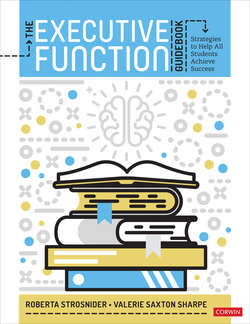Читать книгу The Executive Function Guidebook - Roberta Strosnider - Страница 16
На сайте Литреса книга снята с продажи.
Metacognition
ОглавлениеMetacognition is defined as thinking about one’s own thinking and learning (Meltzer, 2010). It provides your student with the opportunity to think about his or her
general ability,
competency on specific tasks,
control over outcomes,
causes of failure, and
understanding the benefits of specific strategies (Reid & Leinemann, 2006).
Teaching students to use metacognition is a crucial component of the 7-Step Model of executive function skills training. The process of metacognition involves the student’s understanding of his or her learning needs and applying this understanding, in combination with appropriate strategies, to successfully accomplish a task. Meltzer (2010) states, “To build their motivation, persistence, and work ethic, students need to understand their profiles of strengths and weaknesses. Doing so enables them to determine which strategies work well for them, as well as, why, where, when, and how to apply specific strategies” (p. 10). Students who use metacognition effectively plan and use techniques such as self-talk to reach their goals. The figure below represents the use of metacognition in the learning process.
